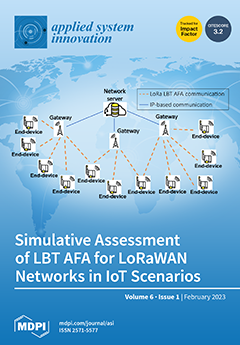In this paper, we present the optimized air space of the lightning protection rod (SK-AOR380) with the function of a charge transfer system (CTS). For evaluation of CTS in the laboratory setting, some studies have focused on the modification of the structure and
[...] Read more.
In this paper, we present the optimized air space of the lightning protection rod (SK-AOR380) with the function of a charge transfer system (CTS). For evaluation of CTS in the laboratory setting, some studies have focused on the modification of the structure and shape of the CTS; the air space is designed (>2 mm) as an empirical design without quantitative data. However, in this paper, we have focused on the air space between the ionizer conductor and current collector to control the inception and occurrence position of corona discharge in air insulation. This is because the performance, such as the initial corona discharge inception of CTS, is determined by the air space. The simulation analysis was performed in a narrow, micro-sized air space as a first step, where the air space was reduced to the extent possible for simulation. To evaluate the performance of SK-AOR380 according to the narrow air space, we considered the numerical analysis method. The fundamental equations consist of Poisson’s equation and the charge continuity equation. Poisson’s equation for electric fields is a fully coupled numerical model based on the charge continuity equations for a positively charged ion, negatively charged ion, and free electron. Fowler–Nordheim electron emission was employed for the boundary condition at the surface of the ionizer conductor. To simulate the corona discharge behavior under standard lightning impulse voltage, we used a source of lightning voltage with 1.2/50
based on a double exponential equation; the corona discharge behaviors (electric field distribution, free electron density, positive and negative ion density) were investigated dependent on each time step (0.5, 1 and 1.2
) until 3.5
. The results revealed that the characteristics graph of free electron density, positive and negative ion density showed similar trends, with lightning impulse voltage increasing with increasing time steps until 1.2
and each density resulted in a decreasing trend from 1.2
to 3.5
. The SK-AOR380 is improved with a decreasing air space in terms of electric field distribution, electron, and ion density. In other words, the 0.0005 mm air space created a non-uniform electric field distribution with a large field enhancement, causing ionization to initiate corona discharge. In addition, in the case of a 0.0005 mm air space, the electric field and electron density are increased by 1.3 and 1.9 times, respectively, than that of 0.001 mm. However, there was no longer a significant difference under 0.0005 mm in the simulation results. To improve the CTS, we suggest the air space between the ionizer conductor and current collector should be less than 2 mm than that of conventional CTS from our research work.
Full article





